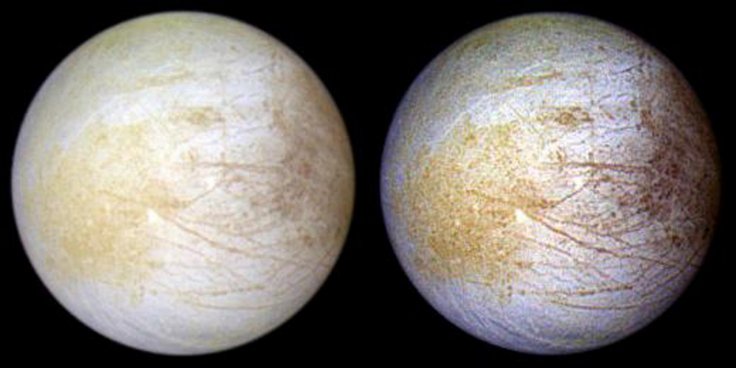
NASA has officially confirmed that it has found traces of water vapor on Europa, which is one of Jupiter's moon. The new discovery could prove that alien microbial life exists on Jupiter's satellite. For years, NASA has been observing Jupiter and its moons through probes and powerful telescopes. Through observations, many scientists believe that Europa might hold pools of liquid water beneath its icy surface.
Many theories suggest that the water exits the moon's surface as vapor plumes through geysers. Unfortunately, despite prior observations and theories, NASA has not yet seen concrete evidence suggesting the presence of liquid water in the vapor that erupts from Europa's surface. Recently, a team from NASA's Goddard Space Flight Center was able to confirm the presence of water on Europa. The team's findings were presented in a new study published in the journal Nature.
The researchers were able to make the historic discovery through the W.M. Keck Observatory, which houses one of the most powerful space telescopes in Hawaii. Through the observatory, NASA's researchers were able to get a closer look at Europa.
As they were observing the moon, which is one of Jupiter's 79 satellites, they spotted traces of water in the vapor. Luca Paganini, a planetary scientist from NASA and leader of the research team stressed the importance of the discovery since liquid water is one of the rarest elements in space. "Essential chemical elements (carbon, hydrogen, oxygen, nitrogen, phosphorus, and sulfur) and sources of energy, two of three requirements for life, are found all over the solar system. But the third — liquid water — is somewhat hard to find beyond Earth," he explained in a statement released by NASA.
"While scientists have not yet detected liquid water directly, we've found the next best thing: water in vapor form," the scientist continued. After confirming the presence of water, Paganini's team theorized that it may have come from the ocean-sized bodies of water beneath the surface of Europa. Another theory suggests that the subsurface water deposits may have come from the melted ice on the moon.
For Paganini and his team, their latest discovery could make a mission to Europa a priority for NASA. After all, past scientific reports have already indicated that liquid water is an essential factor in the formation of alien microbial life.








